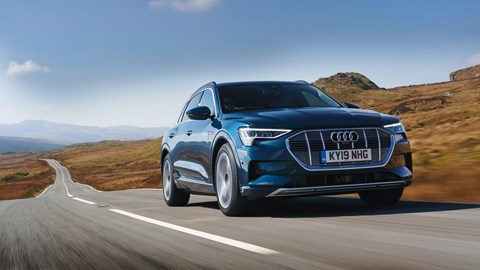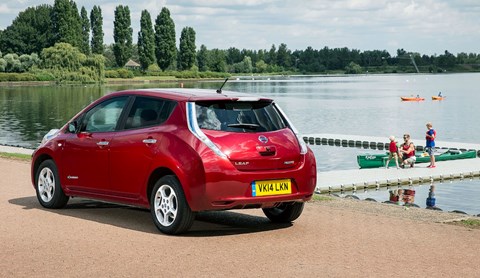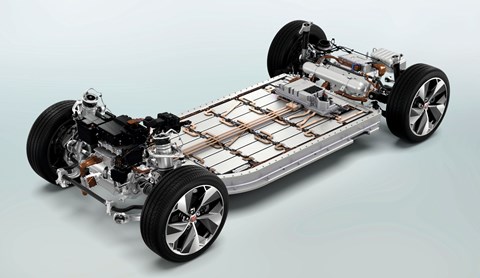► Electric cars: an explainer
► How they work and their advantages
► Should you buy an Electric car in 2020?
The benefits of electric cars are obvious; they’re quiet, clean, relaxing to drive and inexpensive to run. Unsurprisingly, as a result, their popularity is growing – and, as technology advances and prices fall, more people will make the switch to zero-emissions motoring.
If you haven’t already, you too may be considering ditching your diesel or petrol car and buying an electric vehicle (EV) in the near future. It’s an increasingly appealing proposition, since there are more models available now than ever before and running cost of keeping and charging an EV have been shown to be significant.
In this article we’ll outline everything you need to know about EVs, from what to buy right now, what you could wait for – and even buying used. We’ll also outline how much electric cars cost to run, just how easy they actually are to charge, and what the actual situation is regarding charging points in the UK.
If you’re looking at buying an electric car, read this first – or check out the more detailed advice pages below.
Further electric reading
Should I buy an electric car in 2020?
We’ll skip straight to the most important question first: ‘Is it worth getting an electric car?’
Sure, they’re often more expensive than petrol or diesel alternatives right now, but – aside from the matter of price – countless drivers could jump into an EV today and find motoring no more complicated than it is in a fuel-burning car.
That’s not to say that an electric car would suit everyone; the realities of charging and range are two factors that need to be considered, for example. But, if you can make the leap, there are numerous advantages – ranging from reduced harm to your local environment through to potentially far lower running costs.
Think about the length of journeys you tend to do, for starters; are they shorter than the range of an EV? Will you have opportunities to charge up at work, or en route, or at home? If so, and you see an EV fitting neatly into your life, click here for a list of the best electric cars.
Like any type of new technology, EVs are improving rapidly – but you shouldn’t necessarily wait to buy one; the current crop benefit from quick charging times and good efficiency, which in conjunction with an ever-expanding charging infrastructure means range is less of a concern than it used to be.

If you chose to wait, though, you could drive some very innovative metal from the likes of Volkswagen, Mercedes-Benz, Honda and more. Want to know more about those? Read our guide to the most interesting upcoming electric cars here.
Should I buy a used electric car?
Buying a used EV is surprisingly similar to buying any secondhand car, and some aspects are much better: brake wear is reduced thanks to regenerative technology, there’s less mess from oil and combustion, and the drivetrains are often durable and straightforward.
The downside is that, if things go wrong, repairs can still be very expensive and time-consuming. A dying or duff battery pack could cost thousands of pounds to replace, for example, so if a deal looks too good to be true then it could be a much bigger gamble than you anticipated. Read our guide to getting a used electric car here.

How does an electric car work?
Pure electric cars shun the use of an ICE (internal combustion engine) and instead rely on a large battery pack to power an electric motor which drives the car’s wheels. Usually, electric cars have one motor that drives the front or rear axle – but higher-end EVs, such as the Audi e-Tron and Tesla Model 3 Performance, use a motor per axle to deliver all-wheel drive.

Tell me more about the batteries
The battery pack of an EV consists of thousands of individual cells, which together produce the required output to drive the car’s motor. They are typically exceptionally heavy and need to be protected against accident damage – so the packs are engineered to be very strong and are often surrounded by structural elements of the car.
Efforts are also made to avoid the battery pack intruding into the passenger or boot area, which would compromise comfort and practicality. In many cases, this results in a low-profile pack that is mounted near to the ground. This is also good for handling, as it lowers the centre of gravity of the car and improves its handling. It’s a set-up found in pretty much all EVs you can buy nowadays, from the highly practical Audi e-Tron and Kia Soul EV, to the Polestar 2 and Tesla Roadster.
Many electric cars also make use of what is dubbed a ‘skateboard’. This typically refers to a configuration in which the battery, chassis and running gear form one complete rolling assembly – and the body of the car is simply dropped on top. This allows for improved flexibility, among other things, and allows manufacturers to use one well-configured skateboard to underpin several different styles of car.
How does an electric car charge – and what does it cost?
In principle, charging an EV is exactly like charging a mobile phone. Once the battery has been depleted, an electric car needs to be plugged into a charging point. Public charging points are available but, if you’ve a suitable space, you can also have a charging point installed at your home.
The capabilities of these charging points and their connectors varies, though, which has a direct impact on the amount of time it takes to charge an EV. Much like the cars themselves, however, the chargers are also developing rapidly.
You can also often charge an electric car from the mains, but that is an extremely slow process.
Costs vary, too, depending on variables such as where the charger is and which network it is affiliated with. Get more details on electric car charging here.

Charging stations for electric cars used to be few and far between but, as governments and car makers pour money into zero-emissions vehicles, electric charging points are springing up all over the country. The range of EVs is growing all the time, too, thanks to technological improvements in areas such as batteries, motors, control systems and regeneration.
What’s more, it’s important to remember that an EV isn’t topped up in the same way a petrol or diesel car is. Electric chargers can be installed at your home – with destination chargers at the other end of your journey – so you’ll effectively start most drives with a full charge anyway.
Further electric reading